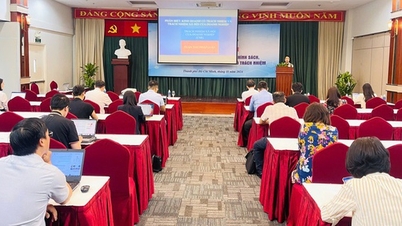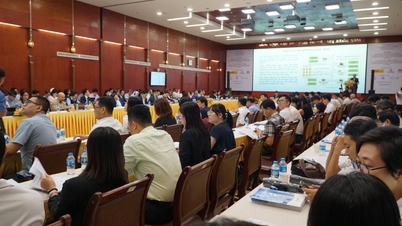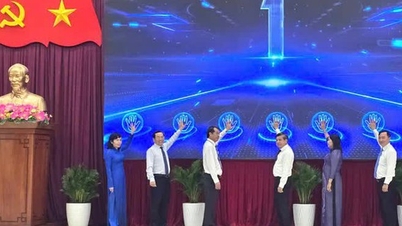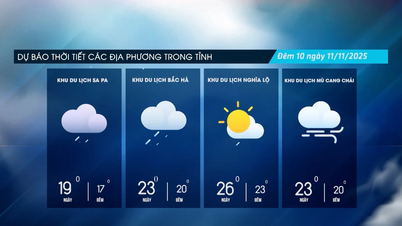3 pillars of modern tax management
The Department of Technology, Digital Transformation and Automation, Department of Taxation said that implementing the Tax System Reform Strategy to 2030 and Resolution No. 57-NQ/TW dated December 22, 2024 of the Politburo on national digital transformation, the Tax sector aims to build a modern, streamlined management system, strongly applying technology, based on data and risk management, reducing compliance costs for taxpayers.
Accordingly, the Tax Department has formed a tax data ecosystem, connecting with ministries, branches and localities, moving towards a comprehensive digital tax management system.
To realize the vision to 2030, the tax sector has identified three closely linked strategic pillars, creating the foundation for modern tax management: Building a big, interconnected, centralized data system: Considering data as a core asset, the most important resource for making management decisions. Establishing a mechanism for connecting and sharing across sectors through open APIs: Creating a synchronous digital ecosystem between state management agencies. Deploying a Compliance Relationship Management (CRM) system: Fundamentally changing the mindset from "management" to "serving and accompanying" taxpayers.
Affirming the role of digital transformation, Deputy Director of the Tax Department Dang Ngoc Minh said, the Ministry of Finance and the Tax Department have identified digital transformation as a core, continuous task of the industry. In recent years, the tax industry has achieved many remarkable results.
Specifically, the Electronic Tax system, the administrative procedure settlement system (TTHC), eTax Mobile helps taxpayers to fulfill their tax declaration and payment obligations anytime, anywhere. As of October 2025, 994,230 enterprises participated in using the electronic tax declaration service out of a total of 1,000,480 operating enterprises, reaching a rate of 99.38%. The Tax Department has connected with 57 commercial banks to serve the implementation of electronic tax payment services. To date, the number of enterprises registered to use the electronic tax payment service with the tax authority is 993,401 enterprises out of a total of 1,000,480 operating enterprises, reaching a rate of 99.29%.

The Foreign Supplier Portal supports registration, declaration and tax payment directly from anywhere in the world . To date, 176 foreign suppliers have registered, declared and paid taxes via the Foreign Supplier Portal.
The e-commerce information portal meets the requirements for receiving aggregated information from organizations and individuals doing business through e-commerce platforms. As of September 15, 2025, the number of platforms sending data to provide information to tax authorities is 471 e-commerce platforms corresponding to 3,178 submissions.
At the same time, on December 19, 2024, the Tax Department continued to deploy the Electronic Information Portal for households and individuals doing e-commerce business to register, declare and pay taxes. As of September 15, 2025, 162,590 tax codes were issued to taxpayers, 603,426 declarations and 425,968 payment vouchers were received with a total payment amount of over VND 2,123 billion.
The Centralized Tax Management System (TMS) and Tax Industry Database are deployed to serve analysis, risk assessment, decision support, and are daily aggregated into the national financial database.
Electronic tax services have shortened tax payment time, significantly reducing compliance costs for people and businesses.
In addition, the tax authority has reformed administrative procedures. Currently, the tax administrative procedure set has 218 administrative procedures, including: 134 full-process online public services; 01 partial public service; 83 public services providing online information. The total number of administrative procedures integrated into the National Public Service Portal is 105 administrative procedures. The number of records and results of handling digitized administrative procedures updated to the National Public Service Portal is nearly 15.2 million records. The Ministry has advised and submitted 04 Decisions to promulgate 68 administrative procedures. To date, the total number of administrative procedures in the tax sector is 218 administrative procedures.
Towards a transparent and modern system
Deputy Director of the Tax Department Dang Ngoc Minh said that, based on the Tax Industry Development Strategy to 2030, the Ministry of Finance and the Tax Department are implementing many key solutions to promote digital transformation in tax management, creating maximum convenience for taxpayers and businesses.
Accordingly, the tax sector focuses on five main groups of tasks: perfecting institutions and policies on digital tax; building modern, interconnected technology infrastructure; supporting businesses in digital transformation in tax management; ensuring information safety and security; and enhancing dialogue and cooperation in the digital transformation process.
Deputy Director Dang Ngoc Minh emphasized that digital transformation in tax management is a long journey with many challenges but also opens up great opportunities. This is not only the task of the Tax sector but also the shared responsibility of the entire political system, the business community and the people. These innovations not only help reduce administrative burdens, improve competitiveness for businesses but also increase transparency and efficiency in tax management, towards international standards.
A representative of the Technology, Digital Transformation and Automation Department said that by 2030, the Tax sector will build a Big Data Center, integrating all electronic invoice data, declarations, financial reports, inter-industry data, etc. AI and Machine Learning applications will help analyze transaction chains, detect tax fraud, assign risk scores and support decision-making for management agencies.
Along with that, the Tax Department will innovate compliance strategies such as: providing pre-filled declarations for small and micro enterprises; building risk profiles for new business models; integrating AI in risk forecasting and deploying the "blocking high-risk invoices" application from 2026. The industry will also develop a smart CRM system to group taxpayers, provide appropriate support measures and transparent, easy-to-understand communication.
Through this system, the tax industry aims not only to effectively manage tax obligations but also to build trust and encourage a culture of voluntary compliance within the business community.
Source: https://mst.gov.vn/chuyen-doi-so-nen-tang-xay-dung-he-thong-thue-minh-bach-hien-dai-197251108171619134.htm

























































































![Dong Nai OCOP transition: [Article 3] Linking tourism with OCOP product consumption](https://vphoto.vietnam.vn/thumb/402x226/vietnam/resource/IMAGE/2025/11/10/1762739199309_1324-2740-7_n-162543_981.jpeg)












Comment (0)